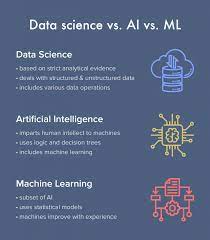The Power of Tailored Software Development
In today’s fast-paced and competitive business environment, off-the-shelf software solutions may not always meet the unique needs of every organisation. This is where tailored software development comes into play, offering bespoke solutions designed specifically to address individual requirements and challenges.
Tailored software development involves creating customised applications or systems that align perfectly with a company’s processes, workflows, and goals. By working closely with experienced developers, businesses can harness the full potential of technology to drive efficiency, productivity, and innovation.
Benefits of Tailored Software Development
Customisation: Tailored software is built from the ground up to fit the exact specifications of a business. This means no unnecessary features or limitations, resulting in a streamlined and efficient solution.
Scalability: Custom software can easily adapt and scale alongside a growing business. Developers can incorporate scalability features that allow the system to expand and evolve as needed.
Integration: Tailored solutions can seamlessly integrate with existing systems and technologies within an organisation, ensuring smooth operations and data flow across different platforms.
Enhanced Security: Custom software development allows for robust security measures to be implemented from the outset, protecting sensitive data and reducing the risk of cyber threats.
The Process of Tailored Software Development
The journey towards a tailored software solution typically begins with in-depth consultations between developers and stakeholders to define project requirements and objectives. From there, a detailed design phase follows, where concepts are transformed into functional specifications.
Development then commences, with skilled programmers coding the solution according to the agreed-upon specifications. Rigorous testing ensures that the software functions flawlessly before deployment, followed by ongoing support and maintenance to keep the system running smoothly over time.
Conclusion
Tailored software development offers businesses a competitive edge by providing customised solutions that address specific needs effectively. By investing in bespoke software tailored to their requirements, organisations can enhance efficiency, productivity, and overall performance in today’s digital landscape.
Five Benefits of Tailored Software Development: Customisation, Scalability, Integration, Security, and Efficiency
- Customisation to fit specific business needs
- Scalability to grow alongside the business
- Seamless integration with existing systems
- Enhanced security measures from the outset
- Optimised efficiency and productivity
Challenges of Tailored Software Development: Costs, Time, and Long-Term Dependencies
- Higher initial cost compared to off-the-shelf solutions
- Longer development time due to customisation requirements
- Potential for scope creep leading to project delays
- Dependency on specific developers or development team for ongoing support and updates
- Limited availability of pre-built features and functionalities, requiring more development effort
- Risk of misalignment with evolving business needs if not properly scoped and planned
Customisation to fit specific business needs
Tailored software development offers the invaluable advantage of customisation to precisely match the unique requirements of a business. By creating bespoke solutions that are tailored to fit specific business needs, organisations can optimise their processes, workflows, and functionalities with precision. This level of customisation ensures that the software aligns perfectly with the company’s objectives, resulting in a more efficient and effective solution that enhances productivity and drives success.
Scalability to grow alongside the business
Scalability is a key advantage of tailored software development, allowing the system to expand and evolve in tandem with the growth of a business. Custom software solutions can be designed with scalability features that enable seamless adaptation to increasing demands and changing requirements. This flexibility ensures that the software remains effective and efficient as the organisation expands, providing a solid foundation for sustained growth and success.
Seamless integration with existing systems
Tailored software development offers the significant advantage of seamless integration with existing systems within an organisation. By customising software solutions to align perfectly with the current technology infrastructure, businesses can ensure smooth operations and data flow across different platforms. This integration capability not only enhances efficiency but also reduces disruption to workflow, allowing for a cohesive and interconnected digital environment that maximises productivity and effectiveness.
Enhanced security measures from the outset
One significant advantage of tailored software development is the implementation of enhanced security measures right from the beginning. By customising software solutions to incorporate robust security features, businesses can proactively safeguard their sensitive data and systems against potential cyber threats. This proactive approach to security not only minimises risks but also instils confidence in stakeholders, demonstrating a commitment to protecting valuable information assets from the outset.
Optimised efficiency and productivity
Tailored software development offers the significant advantage of optimised efficiency and productivity for businesses. By creating customised solutions that align perfectly with the unique processes and workflows of an organisation, tailored software can streamline operations, automate tasks, and eliminate inefficiencies. This results in increased productivity as employees can work more effectively with tools specifically designed to meet their needs. Additionally, tailored software can integrate seamlessly with existing systems, further enhancing efficiency by reducing manual processes and improving data flow across different departments. Ultimately, the tailored approach to software development empowers businesses to achieve higher levels of efficiency and productivity, leading to improved performance and competitive advantage in the market.
Higher initial cost compared to off-the-shelf solutions
One significant drawback of tailored software development is the higher initial cost associated with custom-built solutions compared to off-the-shelf alternatives. Developing bespoke software requires extensive time, resources, and expertise to design and implement a solution that precisely meets the unique requirements of a business. This upfront investment can be a deterrent for some organisations with budget constraints, as off-the-shelf software may offer a more cost-effective but less tailored option. However, despite the higher initial cost, tailored software development often provides long-term value and benefits that can outweigh the upfront expenses in terms of efficiency, scalability, and competitive advantage.
Longer development time due to customisation requirements
One significant drawback of tailored software development is the extended development time caused by the intricate customisation demands. Building bespoke software that precisely aligns with a company’s unique processes and needs often requires thorough planning, design, and implementation phases. This meticulous attention to detail can result in a longer development timeline compared to off-the-shelf solutions, potentially delaying the deployment of the final product and impacting time-to-market strategies for businesses seeking swift technological solutions.
Potential for scope creep leading to project delays
One significant drawback of tailored software development is the potential for scope creep, which can ultimately result in project delays. Scope creep occurs when additional features or requirements are continuously added to the project beyond the initial scope, leading to an expansion of the project’s objectives and timeline. This can cause delays in delivery as developers need to accommodate these changes, impacting both the budget and overall project schedule. Effective project management and clear communication between stakeholders are essential in mitigating scope creep and ensuring that tailored software development projects stay on track and meet their intended deadlines.
Dependency on specific developers or development team for ongoing support and updates
One significant drawback of tailored software development is the dependency it creates on specific developers or a development team for ongoing support and updates. Since custom software is uniquely designed to meet the precise needs of a business, maintaining and updating it often requires specialised knowledge and expertise. If the original developers are no longer available or if there is a lack of proper documentation, transitioning to a new team can be challenging, leading to potential delays, increased costs, and continuity issues in the long term. This dependency on specific individuals can pose a risk to the sustainability and scalability of the tailored software solution over time.
Limited availability of pre-built features and functionalities, requiring more development effort
One significant drawback of tailored software development is the limited availability of pre-built features and functionalities, which can result in the need for more extensive development effort. Unlike off-the-shelf solutions that come with a range of ready-made features, custom software often requires developers to build functionalities from scratch to meet specific requirements. This can lead to increased development time and costs as each feature needs to be carefully designed, developed, and tested to ensure it aligns perfectly with the client’s needs.
Risk of misalignment with evolving business needs if not properly scoped and planned
One significant drawback of tailored software development is the risk of misalignment with evolving business needs if not properly scoped and planned. When custom software solutions are not carefully designed to accommodate potential changes in a company’s operations or goals, there is a danger of the system becoming outdated or inefficient over time. Failure to anticipate and address future requirements can result in increased costs for modifications or even the need to develop an entirely new solution, highlighting the importance of thorough scoping and planning in tailored software projects.




